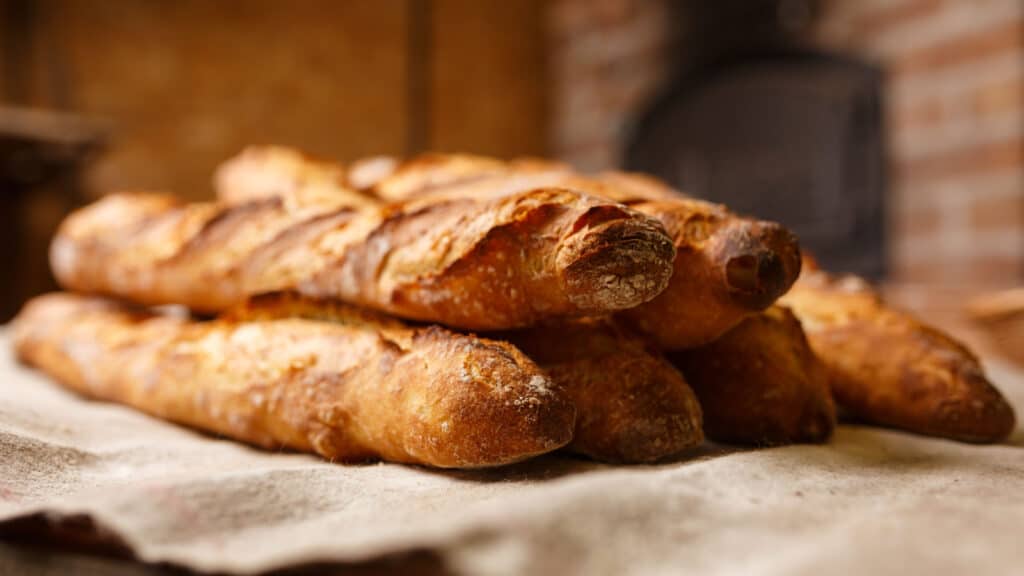How a Simple Loaf of Bread Connects Us All
A simple loaf of bread carries within it thousands of years of history, migration, and memory.
On October 16, the world celebrates World Bread Day. At first glance it may seem like just another food holiday, but bread deserves the spotlight. It is one of the oldest prepared foods known to humankind, and it is found in nearly every culture. Whether baked in a clay oven, fried on a skillet, steamed in bamboo baskets, or torn by hand at a communal meal, bread is both nourishment and symbol. It tells the story of migration, survival, and creativity. To travel through bread is to travel through humanity itself.
The Origins of Bread
Archaeologists believe breadmaking began at least twelve thousand years ago in the Fertile Crescent. Early people mixed ground grains with water and cooked the mixture on hot stones. Over time they discovered fermentation, which made dough rise and created lighter textures. Bread quickly became more than sustenance. It carried spiritual and cultural weight, symbolizing life, hospitality, and community.
From that point forward, every civilization put its own stamp on bread. Egyptians perfected leavening with wild yeast. Romans spread their bread culture across Europe. Indigenous peoples in the Americas crafted breads from maize. Each loaf tells the story of a people and their land.
France and the Iconic Baguette

Few breads are as recognizable as the French baguette. The baguette has (finally) been inducted into the UNESCO World Heritage List and officially inscribed on the Representative List of the Intangible Cultural Heritage of Humanity.
With its crisp crust and chewy interior, it is the product of centuries of refinement. The baguette is not just food, it is an emblem of French identity. Bakers rise before dawn to produce loaves that locals will tuck under their arms on the way home. The ritual of breaking bread together is a daily act in France, reminding us that bread is woven into the rhythm of life.
India’s Naan and Roti
In India, bread takes many forms, from the pillowy naan baked in clay tandoor ovens to the simple roti cooked on flat griddles. These breads are not eaten alone but paired with curries, dals, and vegetables. Bread here is not just a side dish but a utensil, scooping up flavors and blending textures. The practice of eating with bread connects families at the table and ties meals to centuries of tradition.
Mexico’s Bolillos and Tortillas

In Mexico, the tortilla reigns supreme. Made from corn or wheat, tortillas are the foundation of countless meals. They are also deeply symbolic, representing indigenous foodways that have survived colonization and change. Alongside tortillas, the bolillo, a crusty roll introduced by the Spanish, shows how bread reflects history. Every bite of Mexican bread carries the story of resilience and adaptation.
Ethiopia’s Injera
Travel to Ethiopia and bread looks completely different. Injera is a spongy flatbread made from teff, a tiny grain native to the region. With its tangy flavor and unique texture, injera is both plate and fork.Stews and vegetables are spooned onto the bread, and diners tear off pieces to scoop them up. Eating injera is an act of sharing, reinforcing community and connection at every meal.
The Middle Eastern Pita
The Middle East gave us pita, a simple flatbread that puffs up during baking to form a pocket. Pita has been sustaining people for thousands of years. Stuffed with falafel or shawarma, or used to scoop up hummus, it is as practical as it is delicious. The pocket itself feels like a metaphor, carrying flavors, traditions, and stories from one generation to the next.
China’s Mantou
In northern China, where wheat replaces rice as the staple grain, bread takes the form of mantou, soft steamed buns that are mild in flavor but deeply satisfying. They pair with savory dishes or can be enjoyed on their own. The gentle texture of mantou reflects the ingenuity of cooks who found ways to create comfort from the simplest ingredients.
The Role of Bread in Ritual
Bread does more than fill stomachs. It plays a central role in ceremonies and traditions. In Christianity, bread symbolizes the body of Christ in communion. In Judaism, challah bread is braided and blessed at Sabbath dinners. In many cultures, bread is offered to guests as a sign of welcome. Breaking bread together is a universal act of peace and hospitality.
Bread as Survival

Bread has also been the food of survival. During wars and famines, people stretched meager rations into loaves. Soldiers carried hardtack, a durable biscuit that kept them alive on long campaigns.Refugees baked flatbreads on makeshift griddles as they fled conflict. Bread is both comfort and resilience, a reminder of how people endure hardship.
Bread Today
Even as diets evolve and gluten-free options grow in popularity, bread remains a constant presence. Artisanal bakeries now celebrate sourdough and ancient grains. Home bakers experiment with heritage recipes, reviving connections to grandparents and great-grandparents. Social media overflows with photos of carefully scored loaves and golden crusts. Bread has entered a new era of appreciation, blending tradition with innovation.
Why Bread Connects Us
What makes bread so universal? It is humble yet profound. It requires few ingredients but endless creativity. It can be shared at royal banquets or eaten quietly on the side of the road. Bread speaks to both hunger and hospitality. On World Bread Day, we are reminded that across time and place, breaking bread together remains one of the simplest and most powerful human acts.
The Takeaway
Bread is more than food. It is history, culture, and connection. From the French baguette to Ethiopian injera, from Indian naan to Mexican tortillas, every loaf tells a story. On World Bread Day, let us celebrate the incredible variety of breads that connect us to each other and to our shared humanity.







